970x125
In his essay titled ‘Teaching and Training’, the philosopher Gilbert Ryle discusses the student’s movement beyond rote and formulaic learning, using the following metaphor: “The cook’s pudding is a new one and piping hot, but its recipe was known to Mrs. Beeton in the days of Queen Victoria”.
970x125
Watching Dominic Arun’s Lokah: Chapter 1 – Chandra, touted as India’s first female superhero film, one cannot but acknowledge that new wave Malayalam cinema has really come of age, on a global stage. To take the universal trope of a superhero and to serve it out as a zesty new dish by sprinkling delectable local spices is indeed a move that benchmarks new-age superhero storytelling in the Indian context. Malayalam cinema has just served a new, piping hot pudding, whose recipe was known to the erstwhile Kings of cinema.
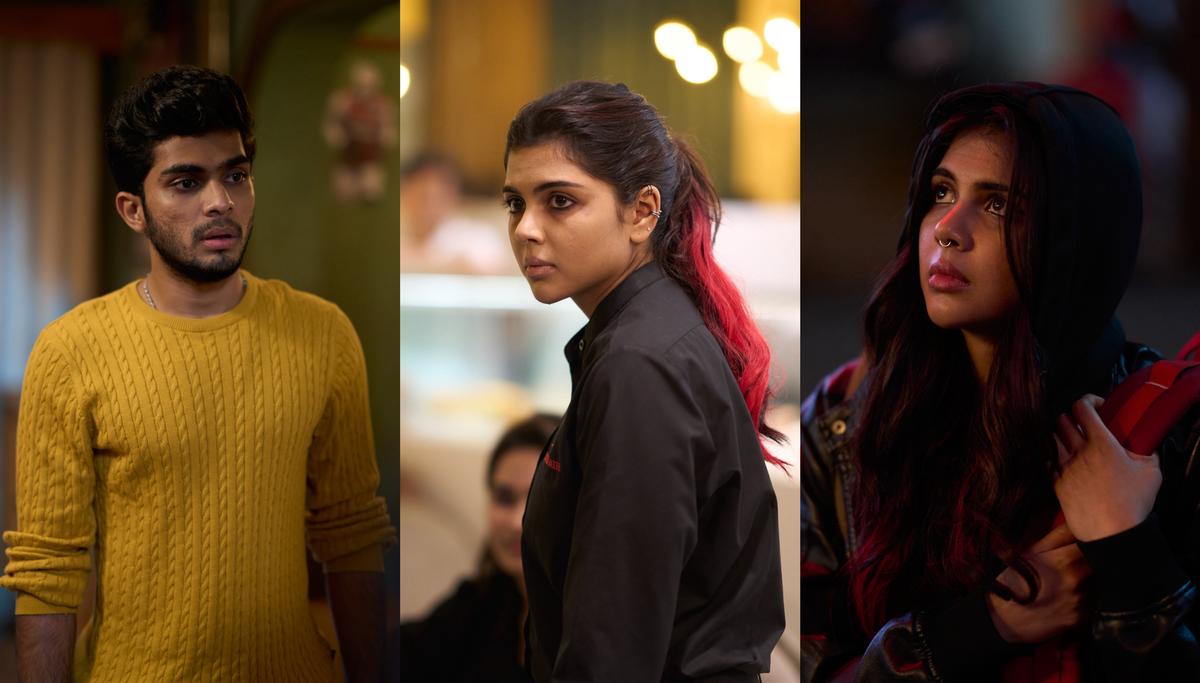
Naslen and Kalyani Priyadarshan in stills from ‘Lokah: Chapter 1 – Chandra’
Lokah reflects a certain confidence and maturity that the Malayalam industry currently seems to be enjoying. Deeply rooted in the DNA of recent Malayalam cinema, vis-à-vis intimate emotions, layered screenwriting, sharp social commentary, and subtle humour. Lokah achieves all this while opening the door to an original superhero universe that feels mythic yet believable. Unlike half-hearted attempts that mimic Western tropes, Lokah genuinely reflects what a well-worked and imaginative reset of a superhero film can look like when it appropriates indigenous folklore and sets it against the backdrop of the modernising everyday of multicultural cities that characterise urban India today.
Lokah’s beginning felt oddly familiar, though presented in the Malayalam language. An operator is dispatched to recover a secret document from an active war zone. She is confronted by an agent with a vaguely East Asian appearance, only to use a sleight of hand manoeuvre to get out. The opening seemed like another Marvelesque production was on the cards. The costume design, choreography and setup felt derivative or akin to a sequence out of Captain America.

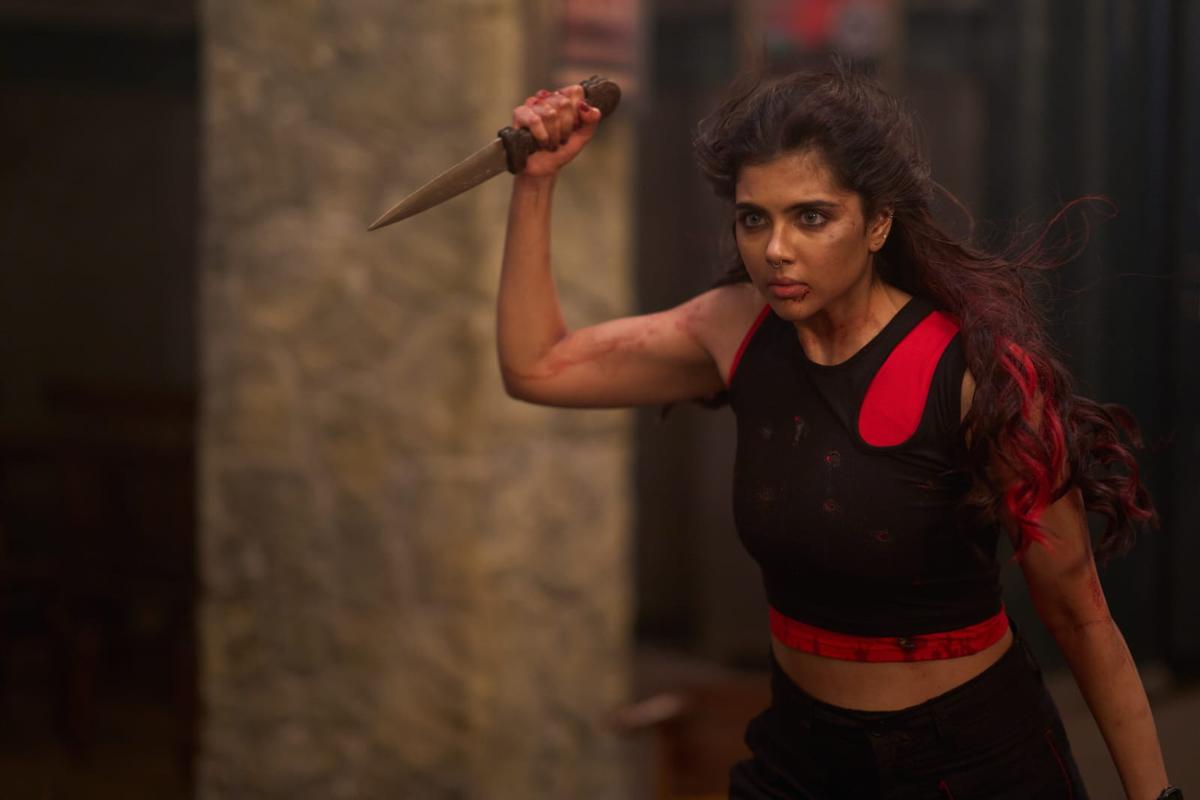
Kalyani Priyadarshan in ‘Lokah’
| Photo Credit:
SPECIAL ARRANGEMENT
As discerning viewers, the first instinct was to remain critical. However, the surprise rendered by another superhero film, the Basil Joseph-directed Minnal Murali(2021), urged a more patient reading. Starring Tovino Thomas, Minnal Murali was refreshing precisely because it blended the otherwise universal superhero into the lifeworld and culture emerging from the paddy fields and coconut groves of Kerala. Its relatability and immersion in everyday rural life set forth an authentic storyline, highlighting how a genre can be creatively adapted without being reduced to imitation.
Similarly, Lokah too quickly overpowered scepticism as its well-crafted storyline makes one pay attention to small details carefully snuck into the storyline. Transitioning smoothly, we find the audience waltzing through shifting plot points and scene changes. What stands out in this film is not simply a female superhero as the central figure, but the manner in which it transmutes the all-too-familiar vampire trope. Drawing from the traditional folklore of Kerala, Lokah feels different, like a culturally sensitive appropriation of the popular Western vampire narrative.
After its pacey and Marvelesque start, Lokah does not rush forward. Rather, it slows down in tempo and reels in the youthful Malayali audience into ever-so-familiar experiences of friendship and their everyday life in an urban center. Having established this reliability with Sunny and his friends using slapstick humour and gendered puns, the audience is once again lifted into the fast and fantastic world of the desi supernatural. This grounding is crucial in making characters and socio-cultural nuances resemble the people we meet in real life. The seamless interspersing of mythology, gender violence and comic relief attests to a highly nuanced screenplay in which dramatic elements are carefully woven.
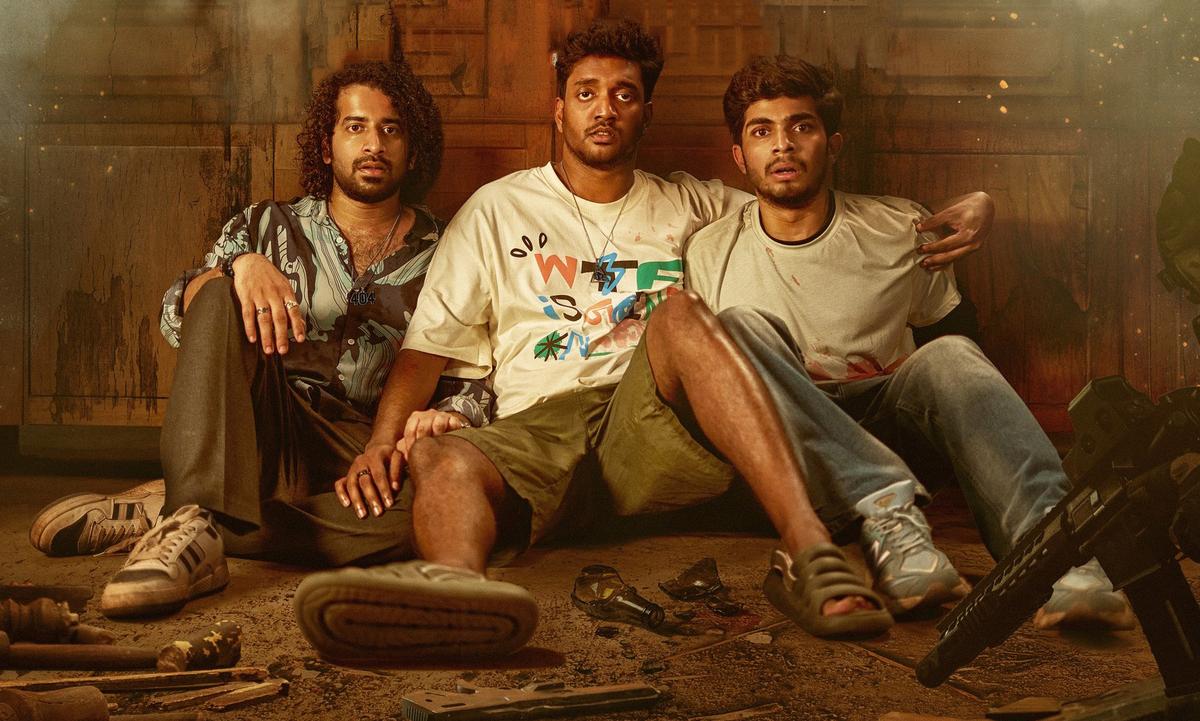
A still from ‘Lokah’
This attention to detail in the flow of the screenplay is evident in the scene that transpires at the tea shop. Here, we find Officer Gowda and his team at a roadside tea shop where everyone except for him is drinking tea. While his subordinates drink tea, one of them casually replies to a colleague that Gowda is not drinking tea as he is a teetotaller. What seems like an unimportant detail later explains why Gowda can become a Yakshi while a seriously injured Sunny can’t have the same fate. Another example of this is seen in the presence of the barking dog across narrative shifts between Chandra’s backstory and the kidnapping scene, which sees her dumped at a railway line to encounter her possible death at the hands of a minor villain. The subtlety with which the dogs and their barking sound is used to serve continuity across timelines is smart.
ALSO READ: India’s first female, comic book superhero tackles COVID-19 in ‘Priya’s Mask’
When it comes to the technical craft of filmmaking, both sound design and cinematography are remarkably advanced, striking yet subtle. Unlike the glossy excess of many big-budget productions, Lokah reasonably achieves a visual depth that feels sophisticated and organic. The gothic sense of imagery and motifs throughout the film, vis-à-vis the use of shadow, reflection, and colour play, is well contrasted with an abundance of crisp exterior shots. In all this, the clarity and vision of the camera work stand out, and its action sequences are not delivered for their own sake but crafted to be swift, rhythmic, and in harmony with the emotional tone of the moment.
The visual effects (VFX) are also seamlessly integrated into this textural masterpiece. Unlike the loud VFX of most superhero films, in Lokah, they do not call attention to themselves. They are part of the universe created rather than an external layer. This makes Chandra’s superpowers themselves feel more credible and the action believable. The most impressive part is that all of this has been achieved on a modest budget. Reports suggest the film cost under ₹50 crores, possibly closer to ₹30 crores. In contrast, Bollywood superhero films often spend several times that amount only to deliver visual noise with little narrative coherence. Lokah demonstrates that budget is not a determinant of the craft.

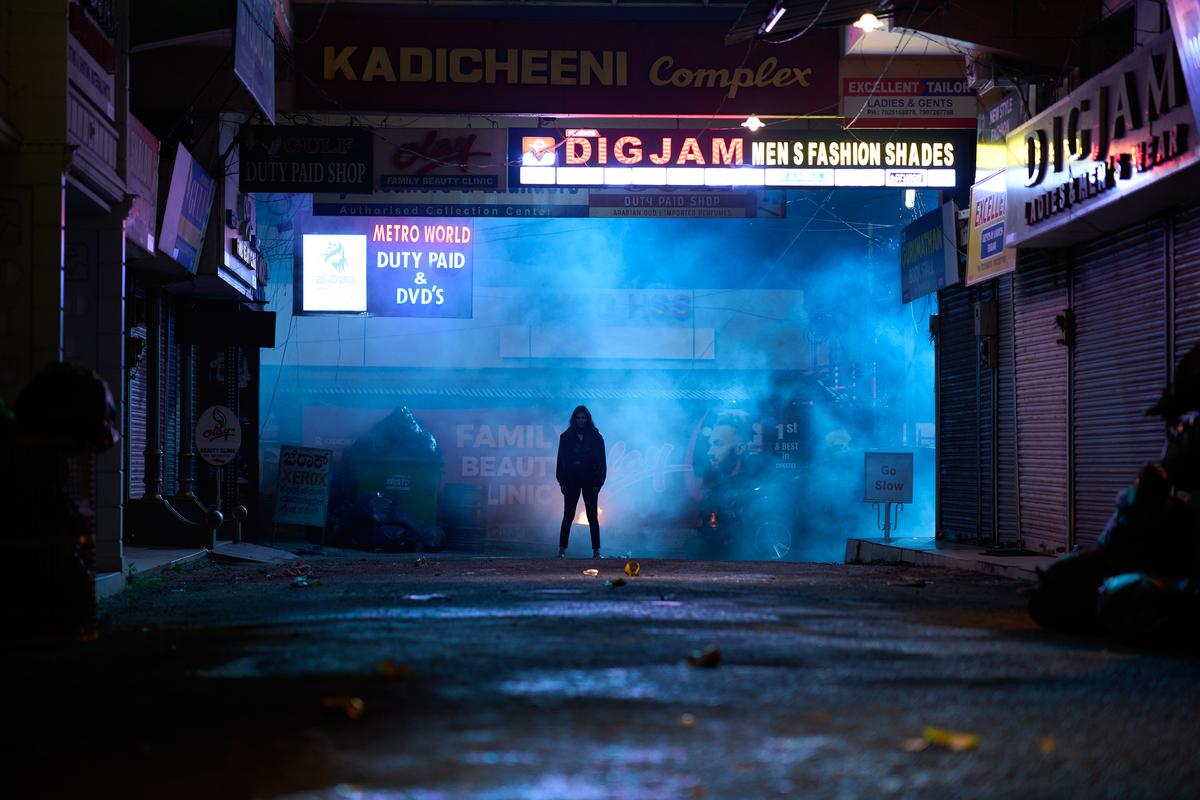
A still from ‘Lokah’
The music is also very crisp, clean, and clear, adding another layer of strength. Even when loud, the sound never overwhelms; instead, it draws the viewer deeper into the film’s atmosphere. The sound follows a pattern of a slow, gradual buildup and then suddenly accelerates with great force, like a bullet train. Yet, it never loses its emotional essence.
The universe of the film is believable precisely because it builds up gradually and organically through its well-thought-out form. The first half resembles the slow tightening of a horror film. The sensation is not of superhero spectacle but of an uneasy presence, like someone watching over your shoulder.
There are, of course, moments when the film evokes comparisons with other works. The anime series Hellsing, in which the Hellsing family trains vampires to battle supernatural forces, comes to mind when we encounter Chandra’s relationship with the priest who captures her and his descendants who equip her to fight other Yakshis and demons. Western vampire lore is clearly a source of inspiration, yet what might seem like copying is in fact mindful indigenisation. The vampire becomes the Yakshi, the setting shifts to Kerala’s forests and marginalised forest communities, and Christian missionaries are recontextualised to engage the religious other. Instead of erasing cultural difference, the film embraces it.

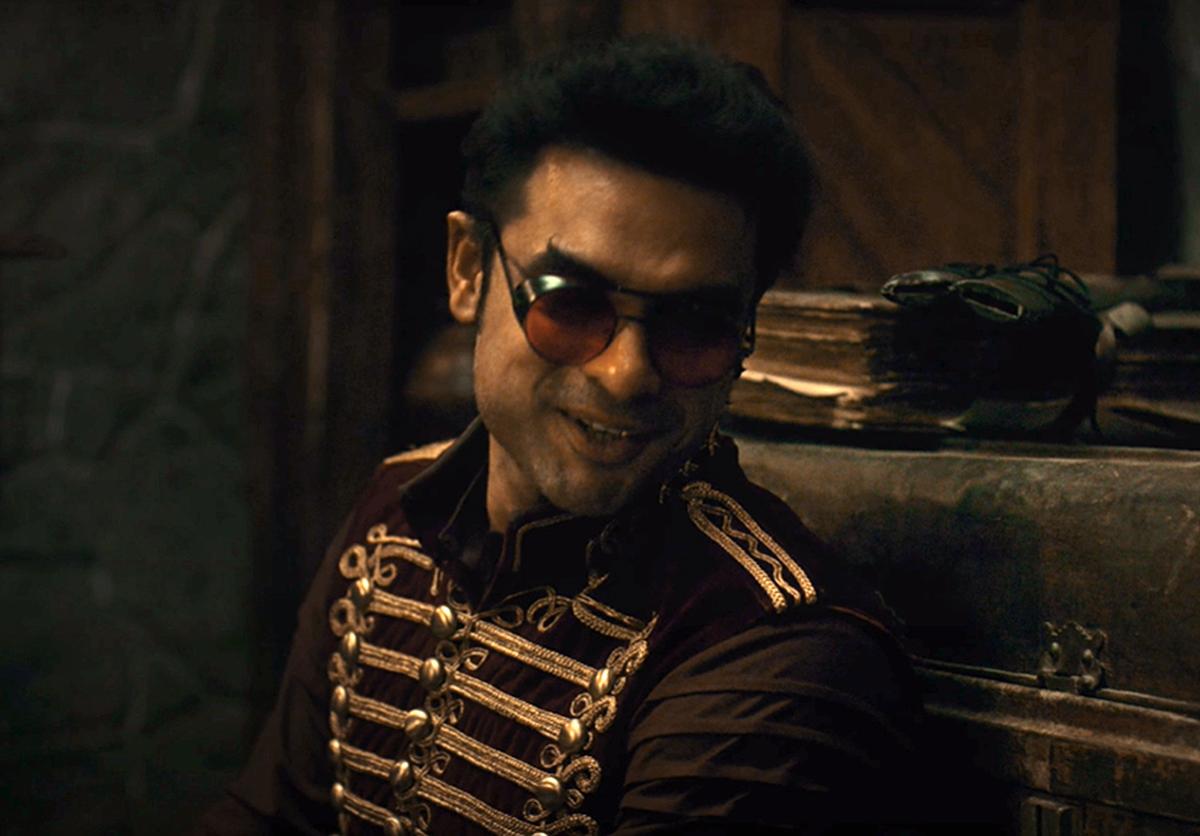
Tovino Thomas in a still from the promo of ‘Lokah: Chapter 2’
Finally, when we look at the character of Chandra (essayed by Kalyani Priyadarshan), her personal trauma is not treated as an occasional narrative device, but woven into the very fabric of the film. She wears it in every gesture and action, her poker face becoming both a mask and a defining feature, aligning with her non-human qualities and the strange powers she embodies. However, there is one lingering irony: the film seems to be marketed as India’s “first woman superhero film”. While Chandra is undeniably the central figure, the end of the narrative clearly sets the stage for a wider pantheon. The introduction of actor Tovino’s Michael and the penultimate appearance of Dulquer Salmaan as Charlie suggest that future instalments will shift toward a collective of heroes, most of them male. It remains to be seen whether Chandra will continue to hold the same centrality or whether the series will relegate her to the margins once male superheroes take the spotlight.
Sonia Ghalian, a film and media scholar, is currently an adjunct faculty member at the Manipal Institute of Liberal Arts, MAHE Dubai. Aivinor Ams is a philosopher and currently a visiting faculty member at BMU Munjal University, Gurgaon.
Published – October 17, 2025 01:38 pm IST
970x125

